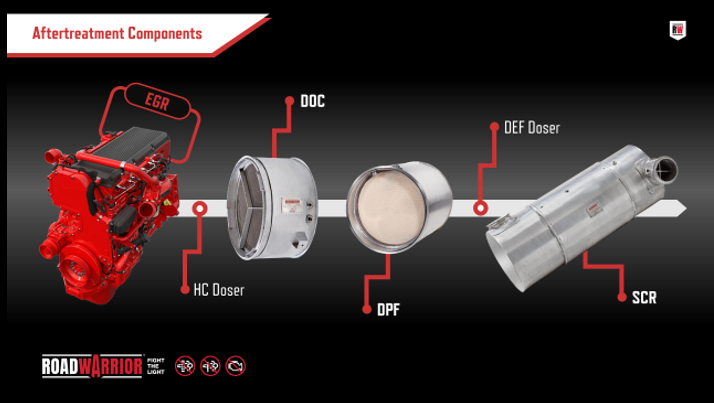KWNE
October 17, 2022
0 Comment
Getting Ahead of Regen Failure
Heavy-duty aftreatment systems were introduced in model-year 2007 trucks with EPA regulations aimed at reducing emissions output from diesel engines. While the introduction of this technology came with challenges along the way, it has made diesel engines much cleaner burning machines than ever before.
One of the challenges faced by drivers and fleets is DPF regen failure, which causes a forced regen and requires the driver to pull over while the system cleans itself out. This not only results in downtime but can negatively impact a delivery schedule. Here’s the good news – a well-maintained truck with a healthy engine will regen without failure!
The first generation of these systems (2007-2009) included the DOC (Diesel Oxidation Catalyst) and DPF (Diesel Particulate Filter) to collect and burn off soot before it was released into the air. In 2010, DEF fluid and the SCR (Selective Catalytic Reduction System) was added to the aftertreatment ecosystem to chemically treat nitrous oxide (NOx) and reduce it to the carbon dioxide and water vapor that escapes the tailpipe.

Regen failure can occur when any one of your aftertreatment components is compromised or when there are issues with your turbo, engine, EGR, temperature or other sensors. If your truck is undergoing frequent regen failure you’ll want to schedule service before the problem snowballs into a bigger (more expensive) issue.
If you are in the market for aftermarket parts for your aftertreatment system, Road Warrior has you covered. They have been leading the pack for decades, ensuring their parts meet or exceed OEM specifications with third-party testing. Manufacturing is also based in North America, improving accessibility to parts when you need them.
